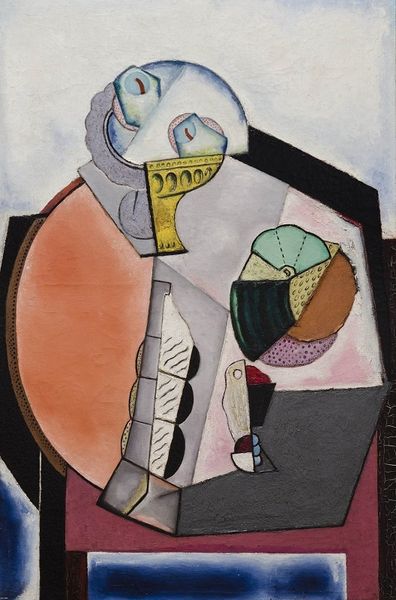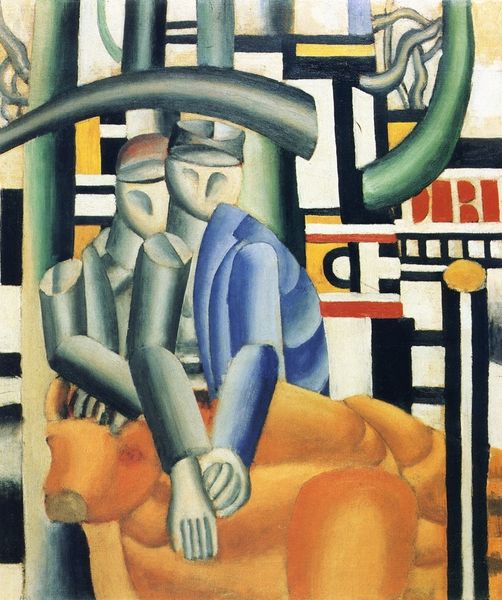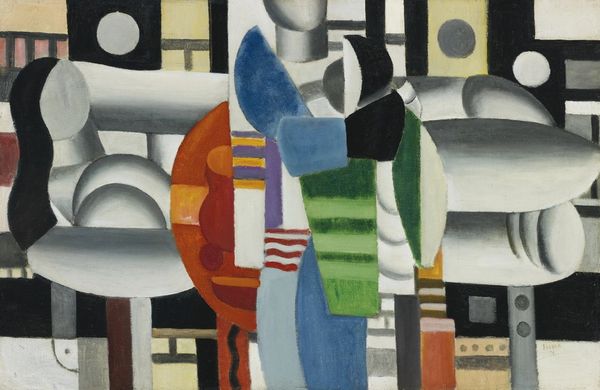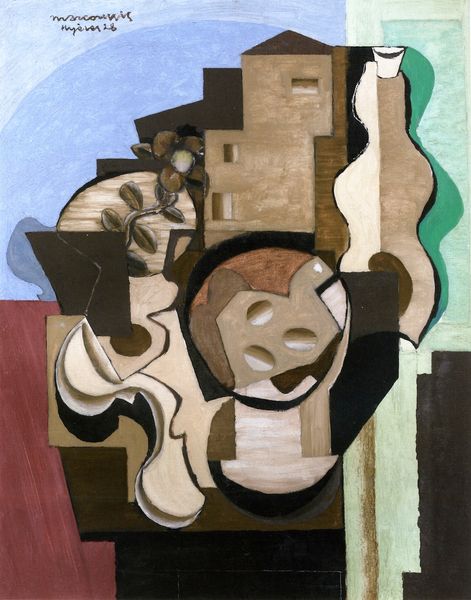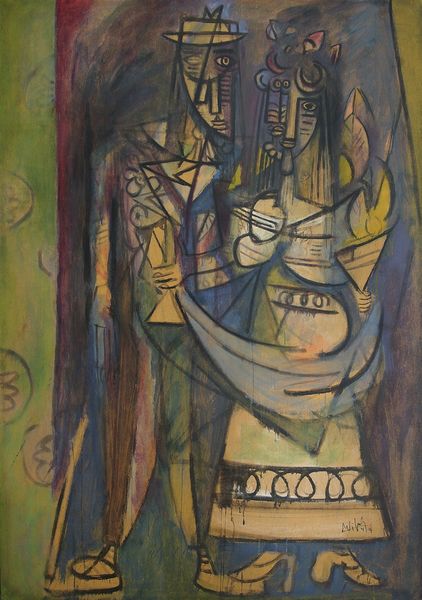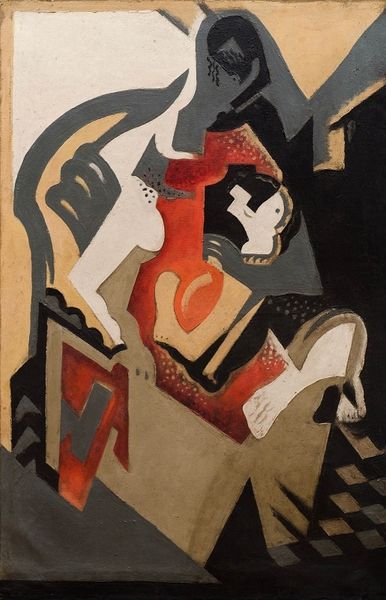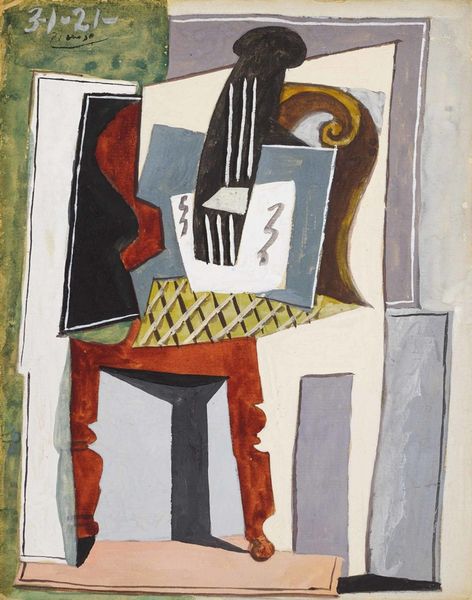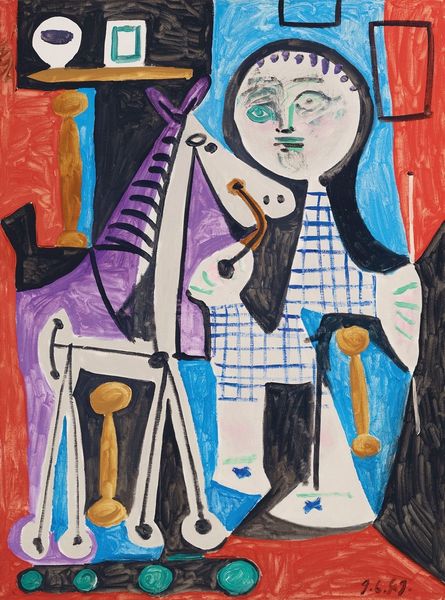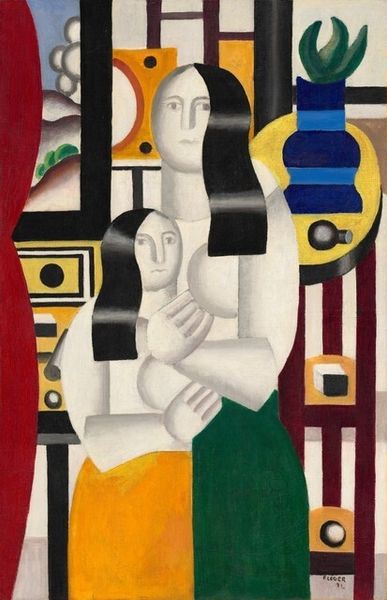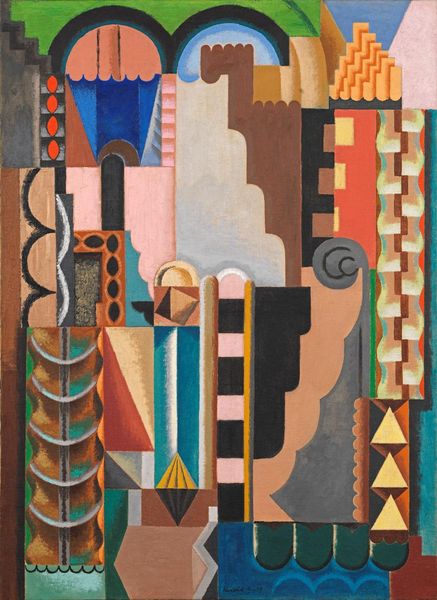
painting, oil-paint
#
portrait
#
art-deco
#
cubism
#
painting
#
oil-paint
#
pop art
#
figuration
#
mural art
#
geometric
#
portrait art
Dimensions: 110 x 77.5 cm
Copyright: Public domain
Editor: We’re looking at Josef Capek's "The African King" from 1920, an oil painting housed at the National Gallery in Prague. I am immediately struck by the rigid geometric shapes; it’s regal but feels… detached. What's your read on this piece? Curator: Oh, I find him utterly charming, don't you? A king perhaps plucked from the imagination! It's that delicious clash of cubist forms and art deco sensibilities. Look at how Capek simplifies the human figure into almost architectural components. The question is, why "African" King? Does it draw upon primitivist fascinations of the time, filtered through Capek’s distinctive lens? It could be a genuine engagement, an appropriation, or perhaps even a parody! Editor: So it's not necessarily a portrait in the traditional sense? More of an… abstraction of power and otherness? Curator: Precisely! He’s an icon, a constructed idea. The green sash and strange decorations… are those intended to be signs of royalty? Or maybe markers of a European view of exoticism. There is so much more here than meets the eye; do you see the violin f-hole shape repeated in other elements? A hint, perhaps of Capek's interest in theater? Editor: I hadn’t noticed! I was so focused on the facial features, or the lack thereof! It does have an odd theatrical vibe to it. The rigid shapes almost resemble set pieces. Curator: They do, don't they? So, is it about power, representation, or the theatricality of identity itself? It’s that ambiguity, that playful yet pointed deconstruction, which keeps me coming back to this piece. Editor: That is a completely different take on it from what I saw initially, I see a whole different approach to decoding its narrative than I did just a moment ago. I love that shift in perspective. Curator: Ah, precisely, sometimes it’s enough to just be in a space, feel a connection, and the story is already being revealed to you!
Comments
No comments
Be the first to comment and join the conversation on the ultimate creative platform.
